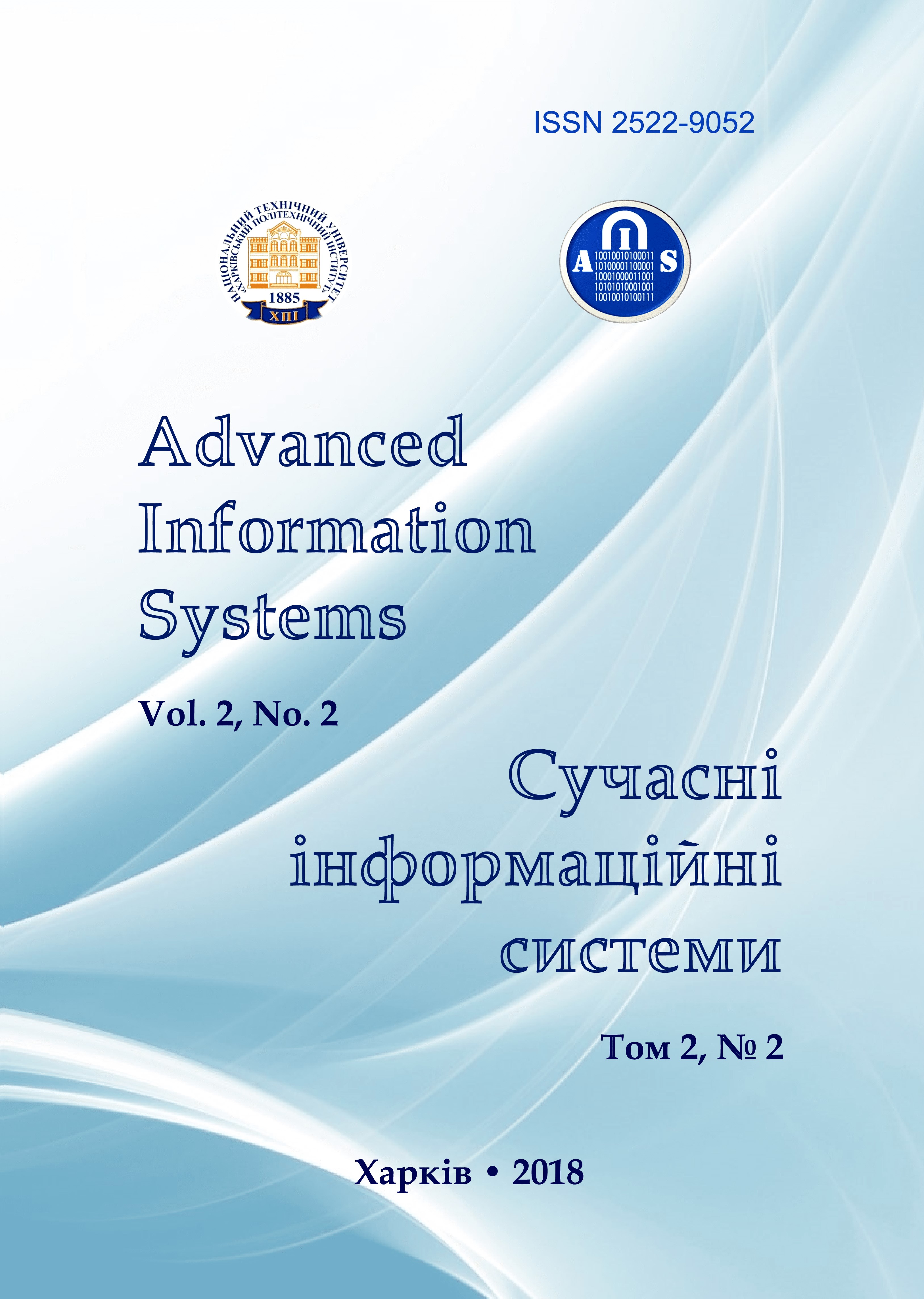DEVELOPMENT OF SOFTWARE OF E-LEARNING INFORMATION SYSTEM SYNTHESIS MODELING PROCESS
Main Article Content
Abstract
The article reflects the results of the study of the created model of the information structure of the system of support. The model allowed to carry out the process of modeling the synthesis of the information system e-learning. A program with a graphical user interface for the synthesis model of the e-learning information system was used for modeling. The program uses the parameters of the hyperconvergent base network and the e-learning system as the input. The result of the synthesis is the optimal placement of users, applications and data blocks by the nodes of the base network. This takes into account the capacity of the system's transactions. This optimizes the capacity of nodes. As a result, the effiency support of the e-learning system is increasing. The structure of the hyperconvergent base network e-learning support network is considered as the main factor that affects the quality of the system's requests. Therefore, it is important to analyze the structure when choosing options for building a hyperconvergent base network and its management. The main purpose of the structure analysis is to determine the parameters of the data streams in the network communication channels. The obtained results are necessary for an adequate estimation of network channels and nodes capacity. Data streams form e-learning tasks, which use applications that launch on network nodes and generate network traffic.
Article Details
References
Shmatkov, S.I., Kuchuk, N.G. and Donets VV (2018), “Model of information structure of the hyperconvergent system of support of electronic computing resources of university e-learning”, Control systems, navigation and communication, Poltava, No. 2 (48), pp. 97-100.
Semenov, S., Sira, O. and Kuchuk N. (2018), “Development of graphic-analytical models for the software security testing algorithm”, Eastern-European journal of enterprise technologies, No. 2/4(92), pp. 39-46.
Kuchuk, G., Kharchenko, V., Kovalenko, A. and Ruchkov, E. (2016), “Approaches to selection of combinatorial algorithm for optimization in network traffic control of safety-critical systems”, East-West Design & Test Symposium (EWDTS), pp. 1-6, available at : https://doi.org/10.1109/EWDTS.2016.7807655.
Kuchuk, G.A., Kovalenko, A.A. and Mozhaev A.A. (2010), “An Approach To Development Of Complex Metric For Multiservice Network Security Assessment”, Statistical Methods Of Signal and Data Processing (SMSDP – 2010): Proc. Int. Conf., October 13-14, 2010, NAU, RED, IEEE Ukraine section joint SP, Kyiv, pp. 158-160.
Kuchuk, G.A. (2013), “Method of synthesis of the information structure of the coherent fragment of the corporate multiservice network”, Collection of scientific works of the Kharkiv University of Air Forces, No. 2 (35), pp. 97-102.
Class diagram (2018), available at : https://ru.wikipedia.org/wiki/Диаграмма_классов (last accessed March 21, 2018).
Mozhaev, O., Kuchuk H., Kuchuk, N., Mozhaev, M. and Lohvynenko M. (2017), “Multiservise network security metric”, IEEE Advanced information and communication technologies-2017. Proc. of the 2th Int. Conf. – Lviv, 2017. – pp. 133-136.
